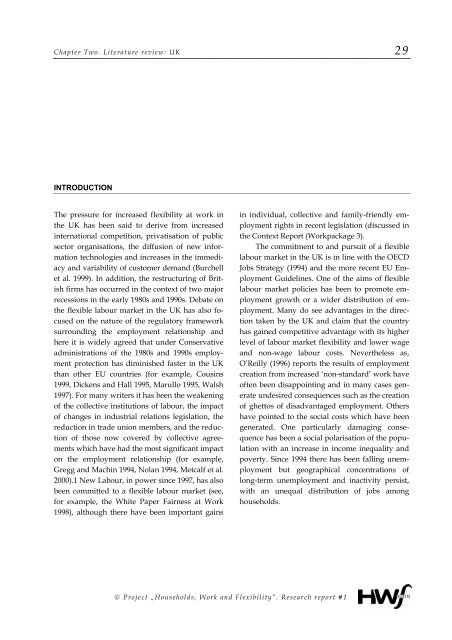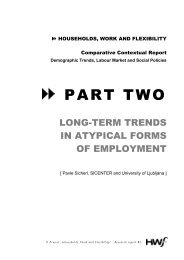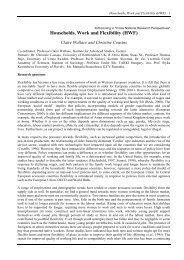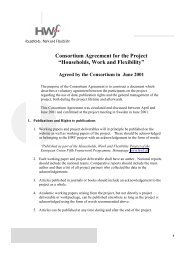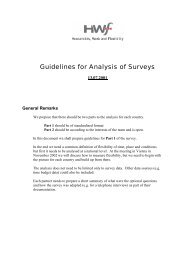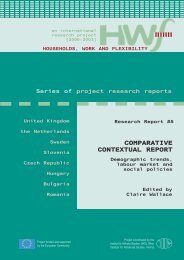CRITICAL REVIEW OF LITERATURE - HWF
CRITICAL REVIEW OF LITERATURE - HWF
CRITICAL REVIEW OF LITERATURE - HWF
You also want an ePaper? Increase the reach of your titles
YUMPU automatically turns print PDFs into web optimized ePapers that Google loves.
Chapter Two. Literature review: UK 29INTRODUCTIONThe pressure for increased flexibility at work inthe UK has been said to derive from increasedinternational competition, privatisation of publicsector organisations, the diffusion of new informationtechnologies and increases in the immediacyand variability of customer demand (Burchellet al. 1999). In addition, the restructuring of Britishfirms has occurred in the context of two majorrecessions in the early 1980s and 1990s. Debate onthe flexible labour market in the UK has also focusedon the nature of the regulatory frameworksurrounding the employment relationship andhere it is widely agreed that under Conservativeadministrations of the 1980s and 1990s employmentprotection has diminished faster in the UKthan other EU countries (for example, Cousins1999, Dickens and Hall 1995, Marullo 1995, Walsh1997). For many writers it has been the weakeningof the collective institutions of labour, the impactof changes in industrial relations legislation, thereduction in trade union members, and the reductionof those now covered by collective agreementswhich have had the most significant impacton the employment relationship (for example,Gregg and Machin 1994, Nolan 1994, Metcalf et al.2000).1 New Labour, in power since 1997, has alsobeen committed to a flexible labour market (see,for example, the White Paper Fairness at Work1998), although there have been important gainsin individual, collective and family-friendly employmentrights in recent legislation (discussed inthe Context Report (Workpackage 3).The commitment to and pursuit of a flexiblelabour market in the UK is in line with the OECDJobs Strategy (1994) and the more recent EU EmploymentGuidelines. One of the aims of flexiblelabour market policies has been to promote employmentgrowth or a wider distribution of employment.Many do see advantages in the directiontaken by the UK and claim that the countryhas gained competitive advantage with its higherlevel of labour market flexibility and lower wageand non-wage labour costs. Nevertheless as,O’Reilly (1996) reports the results of employmentcreation from increased ‘non-standard’ work haveoften been disappointing and in many cases generateundesired consequences such as the creationof ghettos of disadvantaged employment. Othershave pointed to the social costs which have beengenerated. One particularly damaging consequencehas been a social polarisation of the populationwith an increase in income inequality andpoverty. Since 1994 there has been falling unemploymentbut geographical concentrations oflong-term unemployment and inactivity persist,with an unequal distribution of jobs amonghouseholds.© Project „Households, Work and Flexibility”. Research report #1


